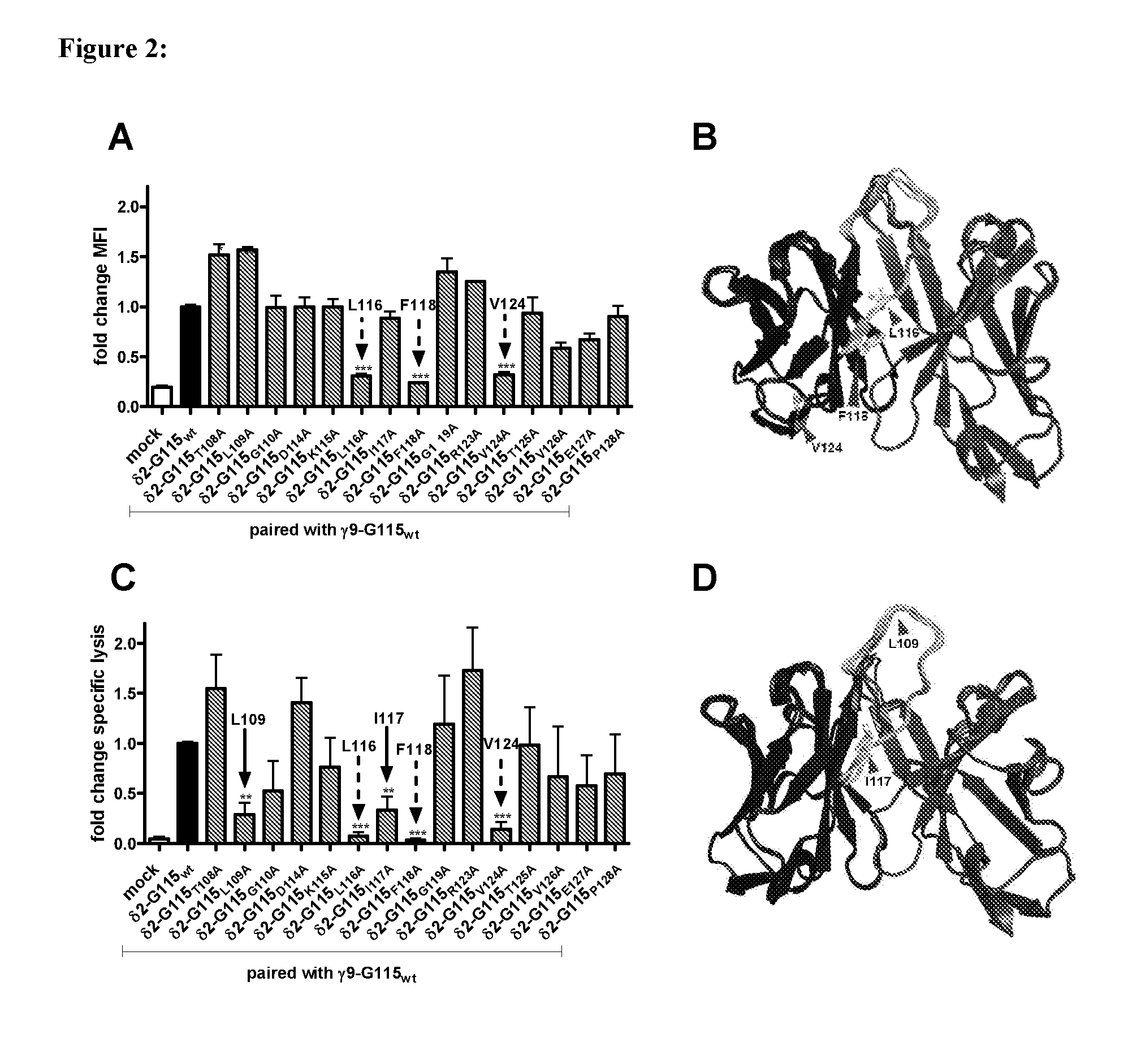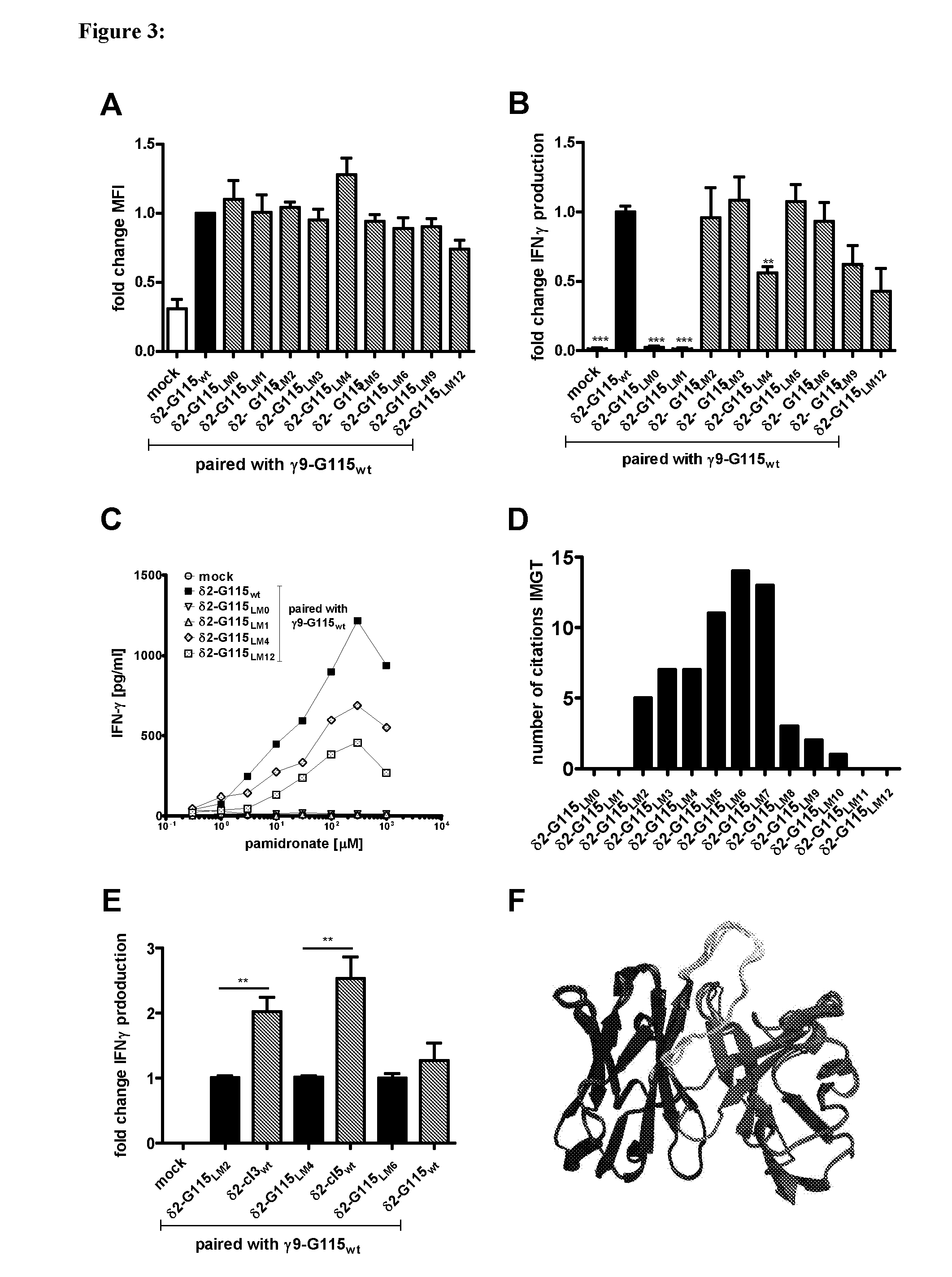Combinatorial gamma 9 delta 2 t cell receptor chain exchange
a gamma 9 delta 2 and receptor technology, applied in the field of medicine, can solve the problem that little knowledge is available about the molecular requirements of a 92tcrs to media
- Summary
- Abstract
- Description
- Claims
- Application Information
AI Technical Summary
Benefits of technology
Problems solved by technology
Method used
Image
Examples
examples
Materials and Methods
[0090]Cells and Cell Lines
[0091]PBMCs were isolated from buffy coats obtained from Sanquin Blood Bank (Amsterdam, The Netherlands). Primary AML blasts were received after obtaining informed consent from the LML biobank UMC Utrecht and a kind gift from Matthias Theobald (Mainz, Germany) and were collected according to GCP and Helsinki regulations. Cell lines are described in supplementary Material and Methods.
[0092]TCR Mutagenesis, Cloning and Sequencing
[0093]γ9δ2TCR modifications are based on codon-optimized genes of γ9- or δ2-TCR chain G115 flanked by NcoI and BamHI restriction sites (synthesized by GeneArt, Regensburg, Germany). To generate alanine-mutations, site-directed mutagenesis was performed by overlap extension PCR 21 or whole plasmid mutagenesis 22; 23, using a proofreading polymerase (Phusion, Bioke). Mutated NcoI-BamHI digested γ9- or δ2-TCR chains were ligated into the retroviral vector pBullet and sequenced by BaseClear (Leiden, The Netherlands).
[...
PUM
| Property | Measurement | Unit |
|---|---|---|
| Fraction | aaaaa | aaaaa |
| Length | aaaaa | aaaaa |
| Solubility (mass) | aaaaa | aaaaa |
Abstract
Description
Claims
Application Information
 Login to View More
Login to View More - R&D
- Intellectual Property
- Life Sciences
- Materials
- Tech Scout
- Unparalleled Data Quality
- Higher Quality Content
- 60% Fewer Hallucinations
Browse by: Latest US Patents, China's latest patents, Technical Efficacy Thesaurus, Application Domain, Technology Topic, Popular Technical Reports.
© 2025 PatSnap. All rights reserved.Legal|Privacy policy|Modern Slavery Act Transparency Statement|Sitemap|About US| Contact US: help@patsnap.com



